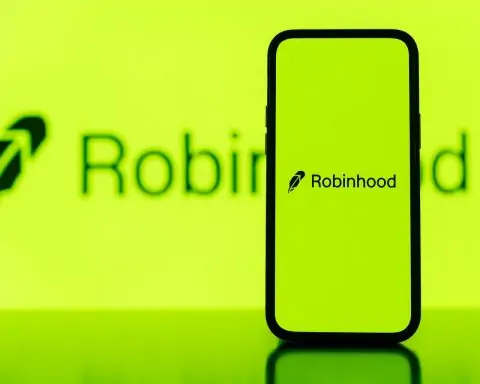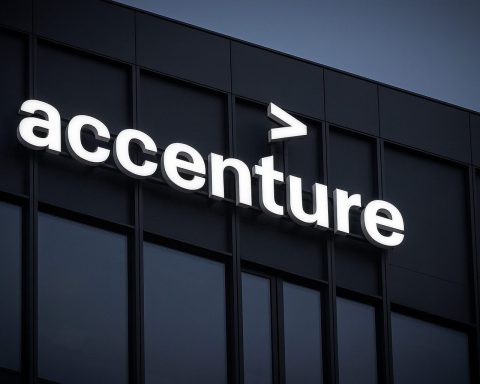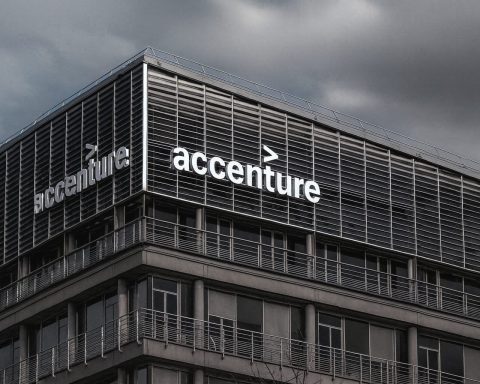San Francisco–based AI startup Alembic Technologies has closed a $145 million Series B round to scale its causal AI platform and build what it claims is one of the fastest privately owned supercomputers in the world. The funding is led by Prysm Capital and Accenture, with participation from Jeffrey Katzenberg’s WndrCo, Silver Lake Waterman, Liquid 2 Ventures, NextEquity and others. [1]
The deal values Alembic at around $645 million, a massive leap from its roughly $49–50 million valuation at its Series A round in early 2024, which was led by WndrCo. [2]
Today, November 16, 2025, fresh analysis from outlets like WebProNews and developer-focused blogs is unpacking what this funding means for marketing, measurement and enterprise AI, and why big names like Accenture and Katzenberg are betting on causal AI. [3]
Quick takeaways
- $145M Series B led by Prysm Capital and Accenture, with WndrCo and other notable investors joining. [4]
- Valuation jumps to ≈$645M, roughly 13–15x the previous round. [5]
- Funds will help Alembic deploy an Nvidia NVL72 superPOD supercomputer and expand its existing GPU clusters. [6]
- Alembic’s causal AI aims to show what actually drives revenue, not just what correlates with it. [7]
- Customers already include Delta Air Lines, Mars, Nvidia and multiple Fortune 500 firms. [8]
What Alembic actually does: causal AI for marketers
Alembic describes itself as a causal AI platform that connects every marketing dollar to revenue, particularly for large enterprises drowning in fragmented data. [9]
Most existing analytics tools show correlations: “When we run TV ads, website traffic goes up.” Alembic’s pitch is different:
- It ingests first- and third-party time-series data across TV, digital, social, offline sponsorships, CRM and more. [10]
- Proprietary causal models then hunt for cause-and-effect relationships, not just patterns. [11]
- The system produces clear recommendations such as which channel combinations truly drive sales, lift retention, or boost brand awareness. [12]
According to Alembic and recent coverage, this approach lets CMOs answer questions that have historically been hand‑wavy, like:
- Which campaigns actually prevent churn?
- Did that sports sponsorship move the needle on ticket sales?
- How much revenue was generated by a viral social moment? [13]
WebProNews’ piece today highlights how Alembic’s tools are being used for churn prediction, engagement lift modeling and Salesforce-driven segmentation while staying within stricter 2025 privacy rules. [14]
Why this round is a big deal
1. A huge valuation jump in under two years
- Series A (early 2024): Led by WndrCo, valuing Alembic at about $49–50M. [15]
- Series B (November 2025): $145M, valuing the company at ≈$645M. [16]
That’s roughly a 13–15x jump in valuation, driven by two things:
- A transition from “just” marketing measurement to what CEO Tomás Puig calls a “central nervous system of the enterprise,” modeling cause and effect across sales, supply chain, finance and more. [17]
- Strong demand from large brands frustrated by “correlation theater” — dashboards that look clever but don’t prove what’s really working. [18]
2. Serious hardware: one of the world’s fastest private AI supercomputers
A large chunk of the new capital is going into bespoke AI infrastructure:
- Alembic is deploying an Nvidia NVL72 superPOD in partnership with Equinix, using Nvidia’s latest Blackwell GPUs. [19]
- This will sit alongside an existing cluster in Northern Virginia, giving Alembic bicoastal redundancy and control over extremely sensitive customer data. [20]
Puig’s team previously pushed off‑the‑shelf GPUs so hard that they literally overheated and failed during early causal experiments, according to VentureBeat’s reporting — hence the need for serious, liquid‑cooled supercomputing gear. [21]
Rather than renting everything from the big clouds, Alembic writes custom CUDA kernels tuned for causal workloads and runs them on its own hardware, arguing that this is cheaper at scale and critical for data sovereignty in regulated industries. [22]
Why Accenture and Katzenberg’s WndrCo care
Accenture: “Beyond correlation” for regulated enterprises
Accenture isn’t just an investor; it’s also a major customer and go‑to‑market partner.
In recent commentary, Accenture chair and CEO Julie Sweet has framed causal AI as essential for enterprises that need both high performance and verifiable explanations, especially in regulated sectors. Alembic is positioned as a way to move clients “beyond correlation” toward defensible, evidence-backed decisions. [23]
Accenture had already been using Alembic to help clients restructure around AI‑driven decision-making before stepping in to co‑lead this round, according to WSJ and other reports. [24]
Jeffrey Katzenberg & WndrCo: proof-based brand marketing
WndrCo, the investment firm co‑founded by Jeffrey Katzenberg, led Alembic’s Series A and joined the new round as a returning backer. [25]
Katzenberg has been blunt about his pain point as an advertiser. On Alembic’s site he’s quoted as saying:
“I just want to know if I spend $1, do I get a result that’s worth $1?” [26]
Alembic’s pitch is that it can finally answer that question for big brand campaigns — the TV buys, sponsorships and long‑term brand plays that digital attribution has historically hand‑waved away.
WSJ reporting notes that WndrCo has already helped introduce Alembic to major marketers, including Mars and Delta Air Lines, who have used the platform to tie unpaid social mentions and sponsorships to actual sales. [27]
Inside Alembic’s causal AI engine
According to VentureBeat and SiliconAngle, Alembic’s tech stack looks very different from a typical “LLM plus dashboard” analytics product: [28]
- It uses spiking neural networks and spatio‑temporal graph models that continuously learn as new data arrives.
- Instead of training once and serving static predictions, the platform runs online, evolving models that keep updating in near real time.
- When a customer connects their data, Alembic’s system explores billions of metric and dimension combinations to find the strongest causal signals.
Puig sums up the strategic shift this way:
“Getting a real edge isn’t about using the best LLM; it’s leveraging the unique information rivals can’t access.” [29]
In practice, that means Alembic:
- Operates on customers’ proprietary data, not just web scraps.
- Acts as a private intelligence layer that can plug into multiple AI tools (including LLMs) but sits in front of them as the “source of truth” about what actually drives outcomes. [30]
Real-world use cases: from Olympics sponsorships to candy shapes
Coverage across WSJ, VentureBeat and Alembic’s own case studies highlights several concrete examples: [31]
- Delta Air Lines used Alembic to measure the revenue impact of a Team USA Olympics sponsorship, linking specific sponsorship activations to ticket sales within days.
- Mars analyzed how viral, unpaid social conversations about its candy brands translated into actual uplift in sales — something marketers have struggled to quantify for decades.
- A Fortune 500 tech company reportedly expanded its sales pipeline by over a third by reallocating budget based on Alembic’s causal models. [32]
- Financial services firms have used the platform to tie CEO media appearances and co‑marketing spend to fund flows and new account openings. [33]
WebProNews’ article today adds that early tests of Alembic’s predictive tools have produced engagement lifts of several hundred percent in some campaigns, when marketers adjust spend based on the causal forecasts rather than vanity metrics. [34]
Privacy, Salesforce and the 2025 regulatory landscape
A big part of Alembic’s appeal in 2025 is that it’s designed for privacy‑first, post-cookie marketing:
- The platform is architected to work on aggregated time‑series data rather than individual user tracking, minimizing exposure of personally identifiable information. [35]
- Alembic emphasizes SOC 2/3‑grade security and keeps customer data in tightly controlled environments — a selling point for banks, CPG giants and other firms wary of hyperscale clouds. [36]
Today’s coverage also highlights Salesforce integration as a key plank of the strategy. The idea:
- Use Alembic to compute causal scores for channels, messages or touchpoints.
- Sync those scores back into Salesforce so sales and marketing teams can prioritize accounts, journeys and offers based on the interventions most likely to change outcomes. [37]
In a world of tightening GDPR/CCPA‑style regulations and looming AI governance rules, the ability to show uplift without spying on individuals could be a crucial differentiator.
How this reshapes the AI marketing landscape
Alembic is not operating in a vacuum. It sits in a competitive field that includes:
- Traditional measurement players like Nielsen.
- Analytics platforms from Google, Meta and Salesforce.
- A growing number of AI‑driven attribution and MMM startups. [38]
But several factors set this round — and this company — apart:
- Proprietary math: Alembic claims its causal models are protected by patents and cannot simply be re‑implemented from public research papers. [39]
- Compute moat: Running these models at scale requires supercomputer‑level infrastructure that would cost hundreds of millions annually on public clouds, according to Puig. [40]
- Data neutrality: By operating in neutral colocation facilities with owned hardware, Alembic can work with companies that are contractually barred from putting data on certain hyperscalers — giving it access to customers that big cloud providers can’t easily serve. [41]
Combined with the Accenture partnership and WndrCo’s brand/entertainment network, the Series B round positions Alembic less as a niche martech tool and more as a specialist AI lab for enterprise decision intelligence.
What to watch next
As of November 16, 2025, the key questions for Alembic — and for CMOs watching this space — include:
- Proof at scale: Can Alembic consistently deliver the outsized uplift numbers early adopters report when deployed across dozens or hundreds of brands? [42]
- Beyond marketing: With a platform built on time‑series, graphs and causal inference, how fast will Alembic move deeper into supply chain, pricing, finance and operations? [43]
- Ecosystem plays: How tightly will Alembic’s “private intelligence layer” be integrated into consulting offerings from Accenture and potentially others?
- Regulatory tailwinds: As governments push for explainable AI and auditability, causal models that output clear “because of X, you got Y” narratives may go from nice‑to‑have to mandatory. [44]
For now, the story is clear: investors, consultants and global brands are betting that the next wave of AI advantage won’t come from bigger chatbots, but from models that can finally prove what works.
Alembic’s $145 million war chest — and its monster new supercomputer — are a high‑stakes wager that causal AI will be the engine behind that shift.
References
1. www.wsj.com, 2. www.wsj.com, 3. www.webpronews.com, 4. www.wsj.com, 5. venturebeat.com, 6. venturebeat.com, 7. venturebeat.com, 8. venturebeat.com, 9. getalembic.com, 10. getalembic.com, 11. venturebeat.com, 12. getalembic.com, 13. venturebeat.com, 14. www.webpronews.com, 15. www.wsj.com, 16. venturebeat.com, 17. venturebeat.com, 18. www.webpronews.com, 19. siliconangle.com, 20. venturebeat.com, 21. venturebeat.com, 22. venturebeat.com, 23. siliconangle.com, 24. www.wsj.com, 25. www.wsj.com, 26. getalembic.com, 27. www.wsj.com, 28. venturebeat.com, 29. venturebeat.com, 30. venturebeat.com, 31. www.wsj.com, 32. venturebeat.com, 33. venturebeat.com, 34. www.webpronews.com, 35. getalembic.com, 36. getalembic.com, 37. www.webpronews.com, 38. venturebeat.com, 39. venturebeat.com, 40. venturebeat.com, 41. venturebeat.com, 42. www.webpronews.com, 43. venturebeat.com, 44. valasys.com










